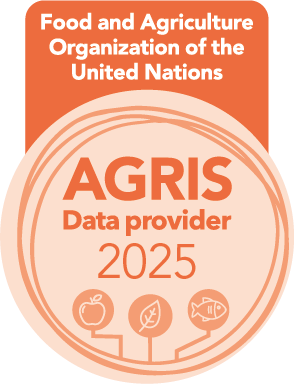Assessing the Satisfaction of Women Members of Cooperative Societies
DOI:
https://doi.org/10.26725/JEE.2023.3.35.7070-7080Keywords:
Women Members; Co-operative Societies; Agricultural Cooperatives; Milk Cooperatives; Structural Equation Modeling; Mediation Model; KeralaAbstract
In Kerala, a constituent state of India, the expansion of agricultural and related cooperatives indicates the general degree of contentment among its members. This study aims to analyse data from a primary survey among agricultural and milk cooperatives to elucidate the elements contributing to members’ satisfaction. Descriptive statistics indicate that most female members of the cooperatives have completed only a basic level of education, and furthermore, only a minority of them occupy important roles within these organizations. The estimated structural equation model depicts the dynamics of satisfaction in detail. According to the study, members’ participation in cooperative activities yields a variety of benefits, thereby increasing their overall satisfaction.References
Azad, N. (2017). Gender is more than a statistic: Status of women in the cooperatives of the Asia Pacific region. The International Cooperative Alliance – Asia-Pacific. https://www.icaap.coop/sites/ica-ap.coop/files/ Data%20Study%20Report.PDF
Davis, A. M. (2023). Problems of scheduled caste co-operative societies and their members: A qualitative approach. Asian Journal of Agricultural Extension, Economics & Sociology, 41(3), 82-88. https://doi.org/10.9734/ajaees/2023/v41i31862
Figueiredo, V., & Franco, M. (2018). Factors influencing cooperator satisfaction: A study applied to wine cooperatives in Portugal. Journal of Cleaner Production, 191, 15–25. https://doi.org/10.1016/j. jclepro.2018.04.177
Franke, R.W., & Chasin, B. H. (1996). Female headed households: A Continuing Agenda for Kerala Model?. Economic and Political Weekly, 31(10), 625-630. https://msuweb.montclair.edu/~franker/KeralaPapers/ F r ank eChasinF emaleHouseholds EPW1996.pdf
Global survey on women’s participation in cooperatives. (2015). International Labour Organization (ILO) and the International Co- operative Alliance. https://www.ilo.org/resource/news/global-survey-shows-rising- womens-participation cooperatives
Government of Kerala. (2018). Statistical Abstract. Department of Cooperation. Government of Kerala. https://cooperation.kerala.gov. in/2019/04/29/statistical-abstract/
Grashuis, J., & Cook, M. L. (2019). A structural equation model of cooperative member satisfaction and long-term commitment. International Food and Agribusiness Management Review, 22(2), 247–263. https:// doi.org/10.22434/IFAMR2018.0101
Havaei, F., Astivia, O. L. O., & MacPhee, M. (2020). The impact of workplace violence on medical-surgical nurses’ health outcome: A moderated mediation model of work environment conditions and burnout using secondary data. International Journal of Nursing Studies, 109, 103666. https://doi. org/10.1016/j.ijnurstu.2020.103666
Hayes, A. F. (2022). Introduction to mediation, moderation, and conditional process analysis: A regression-based approach (Vol. 3). The Guilford Press.
Jain, Charu., Saxena, Disha., Sen, Somnath., & Sanan, Deepak. (2023). Women’s land ownership in India: Evidence from digital land records. 133. https://doi.org/10.1016/j.landusepol.2023.106835.
Jayalakshmi, R. (2003). Gender in cooperatives. Institute of Cooperative Management, Centre for Development Studies, Thiruvananthapuram. https://cds.ac.in/krpcds/report/jayalakshmi.pdf
Majurin, E. (2012). How women fare in east African cooperatives: The case of Kenya, Tanzania and Uganda. The Cooperative Facility for Africa (CoopAfrica), International Labor Office-Darussalam, ILO.
Marete, M.A. (2010). The influence of cooperative structure on member commitment, satisfaction and success: the murang’a nutribusiness cooperative in Kenya. Unpublished thesis. Department of Agricultural and Extension Education. The Pennsylvania State University.
Patel, Neelam & Sethi, Tanu. (2023). Women and youth participation in cooperatives. Kurukshetra. NITI Aayog. https://www.niti. gov.in/women-and-youth-participation-operatives
Pethronila,O. I.,& Agbasi, O. E.(2018). Assessment of the participation of women in agricultural cooperative societies in Anambra State, Nigeria. International Journal of Research in Commerce, Economics & Management, 6(05), 21–26. https://www.researchgate.net/publication/326225880
Population Census . (2011). Office of the Registrar General & Census Commissioner, India.
Prakash, R. (2002). Indian women: Rights, economic position and empowerment. Paper presented at Socio-cultural Issues related to Women and Development in India: A Case Study of War Widows in Rajasthan
Prakashgowda, A. N. (2018). Impact of rural credit cooperative societies on rural development and relevance of Gandhian concept of cooperative movement a case study of Mandya District. Unpublished thesis. University of Mysore.
Pulinilkunnathil, R. G. (2019). Market orientation of women dairy farmers of Kerala. Journal of Extension Education, 31(4), 6405-6410. https://doi.org/10.26725/JEE.2019.4.31.6405-6410
Sarwar, A., Khan, J., Muhammad, L., Mubarak, N., & Jaafar, M. (2021). Relationship between organisational dehumanization and nurses’ deviant behaviours: A moderated mediation model. Journal of Nursing Management, 29(5), 1036–1045. https://doi.org/10.1111/ jonm.13241
Shyam Suraj, S.R. (2023). Dairy Entrepreneurial Ecosystem of Kerala, India, Journal of Extension Education, 35(1), 6951-6960. https://doi.org/10.26725/ JEE.2023.1.35.6951-6960
Siddiqui, M. H., & Sharma, T. G. (2010). Analyzing customer satisfaction with service quality in life insurance services. Journal of Targeting,Measurement and Analysis for Marketing, 18(3–4), 221–238. https://doi.org/10.1057/jt.2010.17
Tesfay, A., & Tadele, H. (2013). The Role of Cooperatives in Promoting Socio-Economic Empowerment of Women: Evidence from Multipurpose Cooperative Societies in South-Eastern Zone of Tigray, Ethiopia. International Journal of Community Development, 1(1), 1–11. https://doi.org/10.11634/233028791301325
Downloads
Published
How to Cite
Issue
Section
License
Copyright (c) 2023 https://creativecommons.org/licenses/by-nc-sa/4.0/

This work is licensed under a Creative Commons Attribution-NonCommercial-ShareAlike 4.0 International License.
Authors who publish with JEE agree to the following terms:
- Authors retain copyright and grant JEE right of first publication with the work simultaneously licensed under a Creative Commons Attribution License that allows others to share the work with an acknowledgement of the work's authorship and initial publication in this journal.
- Authors are able to enter into separate, additional contractual arrangements for the non-exclusive distribution of the journal's published version of the work (e.g., post it to an institutional repository or publish it in a book), with an acknowledgement of its initial publication in this journal.
- Authors are permitted and encouraged to post their work online (e.g., in institutional repositories or on their website) prior to and during the submission process, as it can lead to productive exchanges, as well as earlier and greater citation of published work (See The Effect of Open Access).
Extension Education Society
https://creativecommons.org/licenses/by-nc-sa/4.0/
This work is licensed under a Creative Commons Attribution-NonCommercial-ShareAlike 4.0 International License.













.png)

